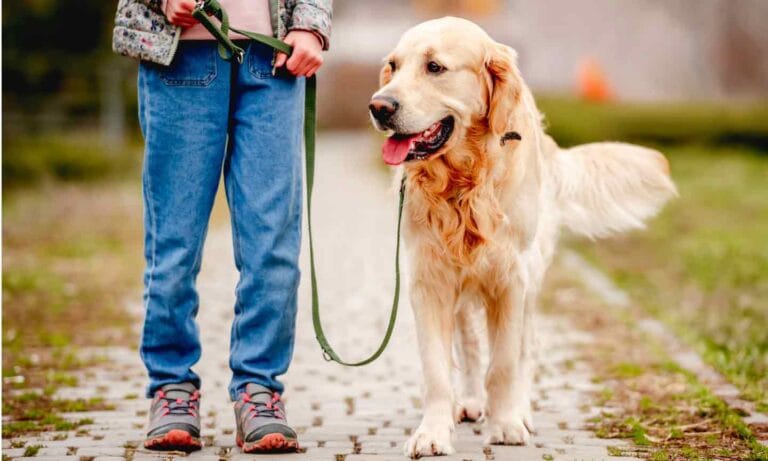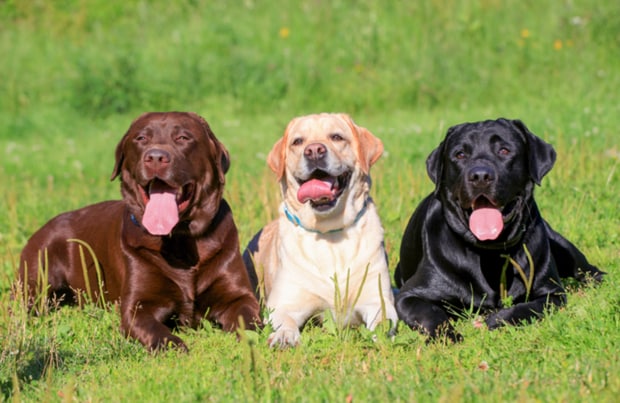Whether you’re preparing to introduce your favorite four-legged child to a brand new baby or vice versa, preparing your dog for living with a newborn or finding the right breed for your newly expanding family can be fraught with concern and frustration. To make this transition easier, we’ve compiled a list of breeds that are generally good with babies and have asked an expert to share tips for creating and encouraging a positive relationship between your pup and infant.
While many breeds have certain characteristics that make them popular family pets, there is a lot of personality and behavior variation within each breed, said Aimee Gilbreath, executive director of Michelson Found Animals, and it can be dangerous for potential pet parents to expect a breed to behave a certain way without the proper training or socialization. Be sure to do your research and learn as much as you can about your potential pup’s personality, behavior and health conditions before bringing him home for good.
Golden Retriever
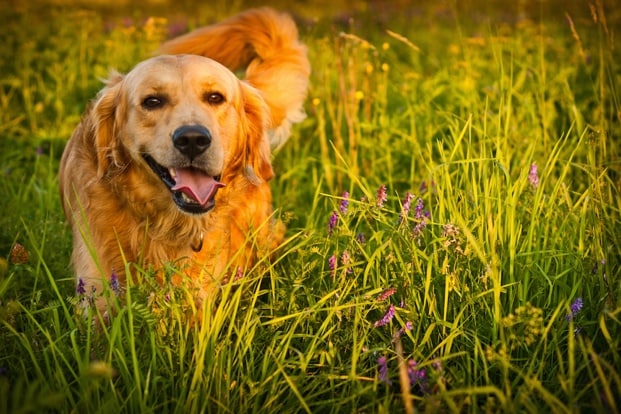
A breed recognized among British nobility for its hunting and retrieving abilities, the Golden Retriever quickly gained popularity for also being a wonderful companion. Loving, loyal and eager to please, Golden Retrievers enjoy socializing with people and spending time with their families, particularly children. The breed, which also excels as a therapy and search and rescue dog, requires regular exercise and weekly brushing to maintain its weight and coat.
A common mistake some parents make when looking for the right dog for their child is gravitating towards smaller dogs, Gilbreath said. While these dogs can be easier to manage, larger dogs, like Golden Retrievers, can generally handle the rough petting and occasional tugging that comes along with infant interactions better than their smaller companions, which may have an adverse reaction to rough play. No matter what size your dog is or how well behaved it is around children, Gilbreath advises against leaving small children unsupervised with a dog.
Beagle
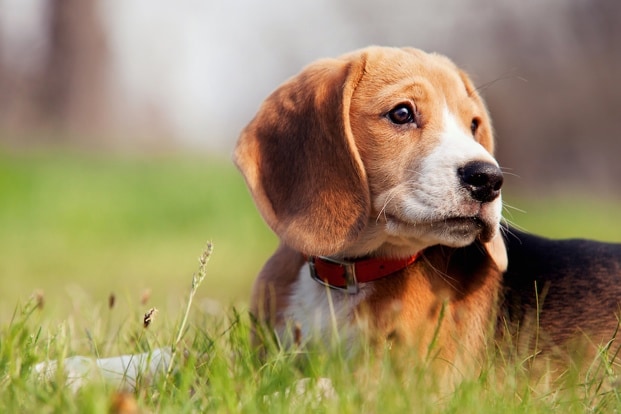
Friendly, gentle and happy-go-lucky, some say that the Beagle never meets a person it doesn’t like. With a compact size and short coat that requires minimal brushing, Beagles get along well with children and naturally enjoy the company of other dogs and people. Because they are hounds, Beagles are known to howl and bark frequently and may follow their noses into trouble if they’re not provided with some daily exercise.
If you already own a dog and are expecting a child, it’s important to begin preparing your dog for the new baby as soon as possible, Gilbreath said. You’ll want to begin changing their routines, learning new commands and adjusting to a schedule in which they may have more time alone ideally 60 to 90 days before the baby is due to arrive, she said.
“You don’t want your dog to associate losing your attention with a new baby,” Gilbreath said. “And if you want to teach them a new command, like “leave it” or “drop it” it takes a while to get that command solid. If you wait until the baby comes home to begin training it may not work.”
Collie
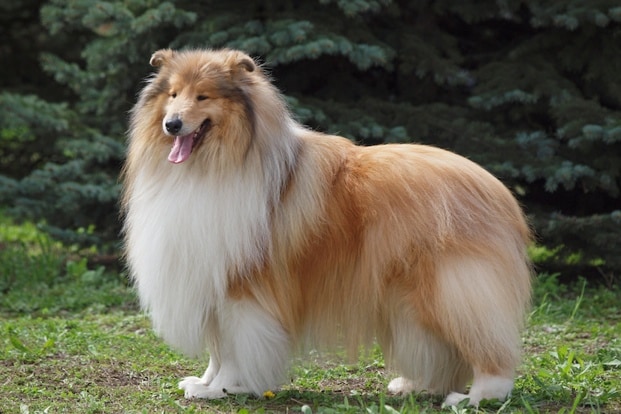
Known for being loving and nurturing with its people and excellent with children, Collies are loyal, affectionate “caregivers” that are devoted to their families. With a large body, a long face and a coat that can be either rough (long) or smooth (short), Collies require weekly brushing and daily walks but are generally calm in the home.
There are several commands you can teach your dog to help maintain a harmonious household with the addition of a baby, including some form of “drop it” or “leave it.” This command can be applied to a variety of unwanted behaviors, Gilbreath said, including getting your dog to stop what they’re doing, drop a baby toy, stay away from baby food that’s been dropped or spilled on the floor and even stopping your dog from licking food off of baby’s face.
Another command she recommends is “go to your bed” or “place,” which can prevent them from being underfoot when you’re running around or things at home are a bit crazy. This keeps them out of the action while providing them with a place of their own to relax, she said. Some version of “four on the floor” (like “off”) can also be useful to prevent your dog from jumping on you or the baby to get attention.
Bulldog

Used for bull baiting in England throughout the 19th century, the Bulldog has now become one of the most beloved and popular family dogs in the U.S. With a heavy build, distinct under bite and lots of wrinkles, the Bulldog is known for forming strong bongs with children and has a gentle, protective nature. The perfect couch companion, Bulldogs love to eat and sleep and will often need prodding to exercise.
If you’re looking to add a dog to your family and you have small children or an infant, consider your lifestyle and the type of dog that may be a good fit for what you like to do, Gilbreath said. If you’re juggling a baby and a job, you may not want to get a dog that requires substantial exercise every day and may get frustrated when it’s not active, she said. Bringing home a relaxed, couch potato-type dog may be a better fit.
Newfoundland
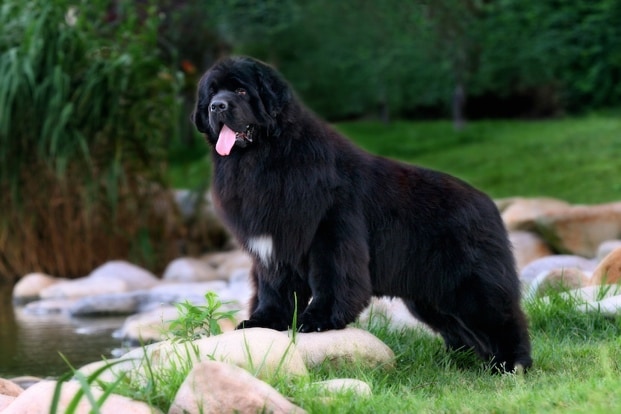
With a winning personality and a desire to please their people, the Newfoundland was originally used to aid in rescues of drowning fishermen because of their excellent swimming skills. A massive breed with a thick, water resistant coat, the Newfoundland’s affectionate and loyal nature makes it an excellent choice for families with children. Provided they are exercised daily and have access to water for an occasional swim, the Newfoundland can do well in a country or urban environment.
You’ll also want to make sure your dog’s leash walking skills are solid before baby arrives, Gilbreath said, and commands like “heel,” “go potty” and “watch me” can be useful to help prevent distractions, keep your dog close to you while you’re walking and let your dog know when it’s time to sniff around and when it’s time to get down to business. You’ll also want to make sure you dog is comfortable walking next to your stroller before baby is in it, Gilbreath said, and never tie your dog’s leash directly to your baby’s stroller.
Poodle
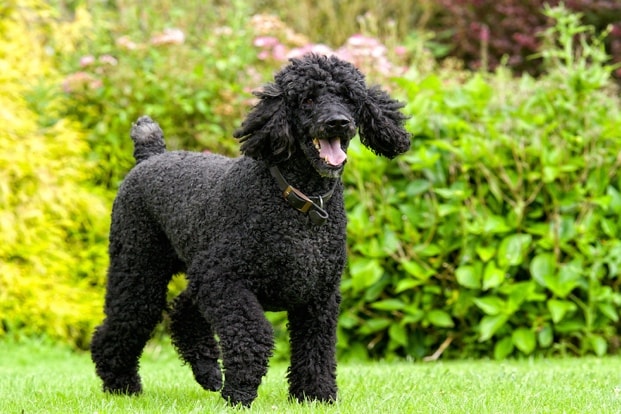
Often recognized by its crazy-curly coat and its success in the show ring, Poodles were originally bred as water retrieval dogs and make wonderful companions. Highly intelligent and active, Poodles love to impress their people and excel in obedience training. With three different size varieties (standard, miniature and toy) Poodles can live comfortably in a variety of home environments and get along well with both children and other dogs.
Intelligent, active dogs like Poodles can often benefit from interactive toys and puzzles to keep them occupied when you’re spending time alone with baby. Gilbreath recommends Busy Buddy toys or other dog interactive toys that you can hide dog treats or your dog’s kibble in. She also recommends replacing the word “no” with something else to redirect them. For example, if you’re trying to train your dog not to jump on the couch or bed when baby is nearby (something it was allowed to do before the baby arrived) consider distracting them by giving them a toy or treat in their bed or using another form of positive reinforcement you know your dog responds to.
Labrador Retriever
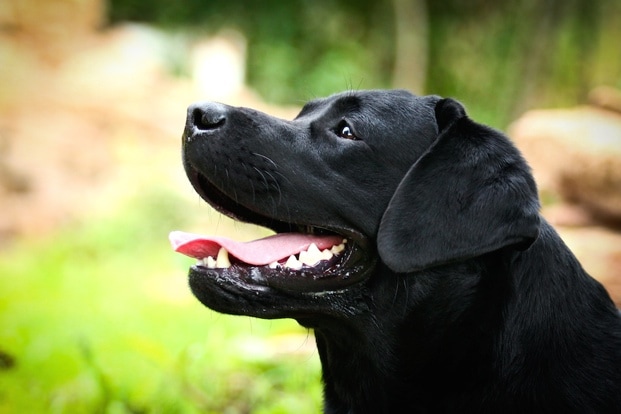
A popular companion breed that is still used as hunting, search and rescue and therapy dogs, Labrador Retrievers make loyal and loving pets. Generally good with children and other animals, Labrador Retrievers love socializing, learning new things and pleasing their people.
These qualities, particularly a desire to please you, can be beneficial when training or working with your dog to be around small children, Gilbreath said.
“If a dog wants to please you, teaching them what to do or not to do in relation to your kids is easy because they want to make you happy,” she added. “Some breeds are known for being aloof and don’t really care what you want while others who want your attention and approval will figure out what you want them to do and do it for you.”
Bull Terrier
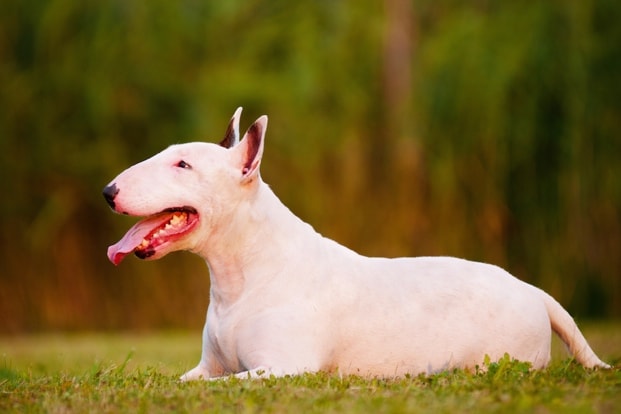
With a distinctively shaped head and a powerful, compact body, Bull Terriers are easily recognized by their appearance. With a playful and affectionate nature, the Bull Terrier makes a devoted and entertaining pet. Known for becoming very attached to its people, the Bull Terrier does not like being left alone for extended periods of time. A breed that generally does well with children, care must be taken to insure that the child doesn’t over stimulate them.
Depending on where you set up your baby’s nursery, you’ll want to prepare your dog for any changes in their sleeping habits or areas in the home they’ll no longer be allowed to roam around, Gilbreath said. Consider putting up baby gates to prevent your dog from getting into anything and remember that training will take time and patience on your end.
“If your dog is used to sleeping with you and he’s suddenly kicked out of the bedroom, he’s not going to understand why,” she said. “Give it some time and recognize that, dog behavior being what it is, you’re going to have to put in some effort to get your dog comfortable with a new routine.”
Pug
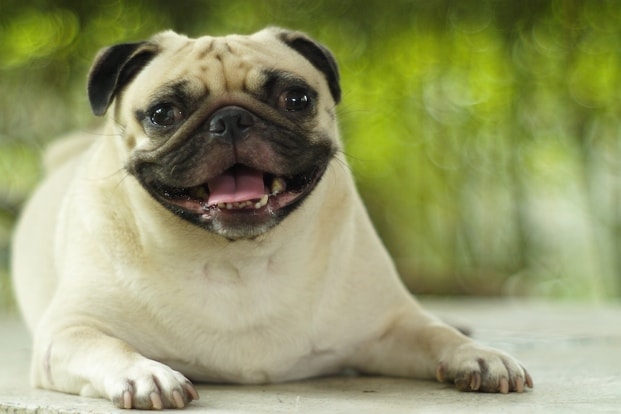
Well loved for its charming and charismatic personality, Pugs are playful and friendly companions that love spending time with and pleasing their people. Because of their small size they can easily adapt to a variety of living situations and can do well in an apartment setting. They require minimal exercise but do need regular cleaning to prevent skin infections, particularly in the wrinkles around their face.
No matter what size your home is, make sure you establish an area that your dog can use as a “safe space” if they want some time alone away from your baby or other family members, Gilbreath said. If your children are small, placing a physical barrier between the dog and children may be beneficial until your child understands the concept of your dog needing a few minutes to itself to relax.
Mixed Breed
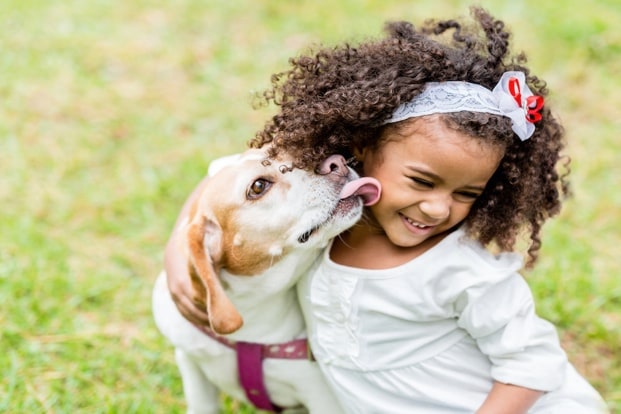
Many animal shelters or rescue groups perform behavioral analysis on their dogs before putting them up for adopting, which can help new parents or potential pet owners learn as much as they can about a dog before taking one home. Adopting an older dog may also be beneficial, as they tend to be a little calmer and a little less mouthy than a puppy. Whereas puppies like to put everything in their mouths, an older dog may be less inclined to explore things, like baby’s fingers or hands, by nibbling on them. No matter what type of dog you choose to welcome into your family, make sure that you’re prepared to put in the time and effort that’s required to create a long-lasting relationship between your children and their family pet.
“I think dogs and kids are a fantastic idea,” Gilbreath said. “They teach children a level of empathy and add a new dimension of socialization. But, as a parent, you need to invest time and energy in managing the relationship. You can’t expect to have a dog show up being kid-trained and vice versa.”

Jessica is a managing editor and spends her days trying not to helicopter parent her beloved shelter pup, Darwin.
Children and Pets
Share:



